The sweet, floral scent of a gardenia fills the senses with its evocative aroma. As spring approaches and the world comes alive in full bloom, discovering what a gardenia smells like is an adventure that will transport your senses! In this guide, we will explore the majestic beauty of this flower and how it affects our emotions – so you can come to understand why its fragrance has captivated us for generations.
What Are Gardenias?
Gardenias are a plant species in the Rubiaceae family, native to tropical and subtropical regions of Africa, southern Asia, Australasia, and Oceania. They produce white or creamy-white flowers that have an incredibly sweet fragrance.
Where Does Gardenia’s Scent Come From?
The scent of gardenia comes from its essential oils. These oils are found naturally in the petals of the flower and they give off a unique, sweet smell that is both floral and slightly fruity.
This produces steam that contains essential oils and can then be collected for use in perfumes, cosmetics, and various other products.
Gardenias have also been used for centuries as an ingredient in traditional medicines. In Chinese medicine, the oil has been used to treat headaches and skin conditions while in India it was considered to have anti-inflammatory properties. In Japan, gardenia flowers were even made into tea to improve the immune system.
Today, gardenias are mostly used for their pleasant scent, but it is still widely appreciated and used in different forms around the world. The scent of gardenia can be described as sweet, floral, and slightly fruity with a hint of spice. It is often said to evoke feelings of relaxation and romance. Whether you’re using it for medicinal purposes or just enjoying its scent, gardenia is sure to bring delight!
What Does Gardenia Smell Like?
Gardenias are lovely, fragrant flowers that have been enjoyed for many generations. Their aroma is often described as sweet, creamy and mildly exotic. Some say it smells like coconut, jasmine or even honey. Others compare the scent to fresh-cut grass or freshly cut hay with floral notes. Whatever your perception of gardenia’s fragrance may be, one thing’s for sure: its scent is unmistakable and utterly beautiful!
The primary reason why gardenias smell so good is that they produce an essential oil called ‘gardenol’ which has a combination of several components such as benzyl acetate, linalool and alpha terpineol. These compounds interact and create the unique scent that we know and love.
When you buy a gardenia in the store, the scent is usually faint. This is because most stores don’t keep them in an ideal environment for maximizing their fragrance. However, once you get home, if you give your flower plenty of sunlight and water it regularly, its powerful aroma will fill your home within just a few days!
In addition to adding beauty and fragrance to your home, gardenias can also be used as ingredients in various homemade skincare products such as scrubs or lotions. Gardenia oil has been known to have beneficial properties such as moisturizing skin and providing anti-aging benefits. So next time when you buy some fresh gardenias from the store, why not make the most of it and make your own homemade skincare products?
Do All Gardenia Varieties Smell the Same?
No, not all gardenia varieties smell the same. Each species has a unique scent that can range from sweet and fruity to spicy and fragrant. Additionally, different varieties have been bred to create distinct scents, such as those with a more intense jasmine-like aroma or even one that smells like ripe peaches. The only way to know which variety will suit your needs is to sample the scents yourself!
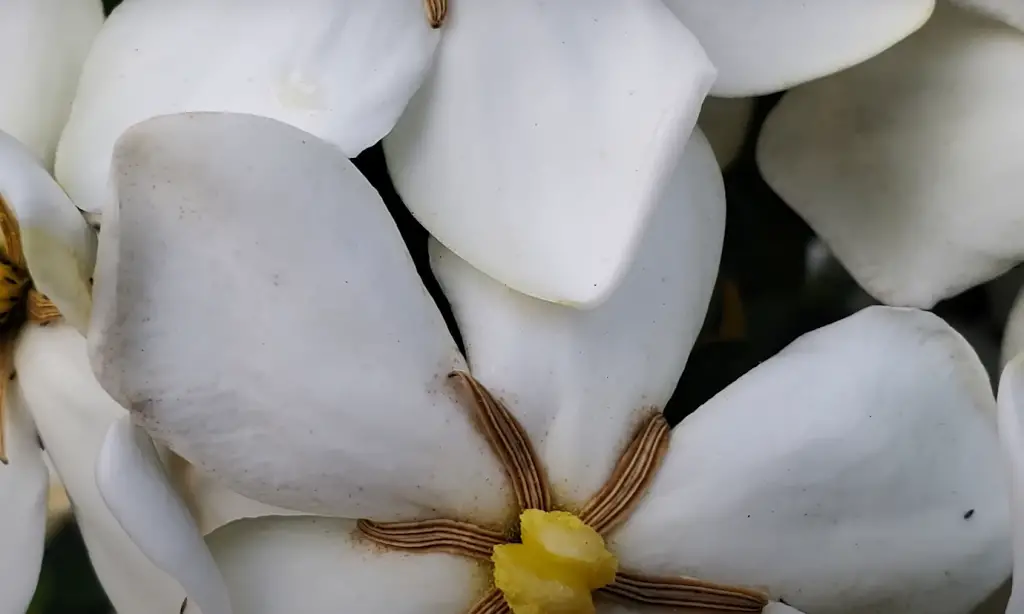
Gardenias are known for their strong scent and some varieties can be quite powerful if the blooms aren’t harvested at just the right moment.
Alternatively, if you purchase them online, check reviews to see what other customers have said about their experiences with the scent of the particular variety.No matter which gardenia variety you choose, they are all beautiful plants that will bring a wonderful fragrance to your home and garden!
Which Gardenia Is the Most Fragrant?
When it comes to smell, the most fragrant gardenia is Gardenia jasminoides ‘Veitchii’. It’s an evergreen shrub that produces light pink flowers with a very powerful scent. The worst smelling varieties are those that have white or yellow-tinged blooms, like Gardenia augusta ‘Magnifica’ and Gardenia thunbergii. These produce a much less fragrant aroma and won’t fill your garden with the same delightful scent as the more vibrant varieties.
It’s also important to note that gardenias can be highly sensitive to temperature changes, so if you’re looking for a particularly strong scent make sure you keep them in warm temperatures at all times. Keep in mind that if you’re looking for a subtle scent, then the white or yellow varieties are actually better suited for this purpose.
Furthermore, gardenias require lots of sunlight and moisture to grow and thrive, so make sure they are planted somewhere with plenty of both. They don’t do well in places with extreme temperatures, so try to keep them away from direct sunlight during the hottest parts of the day. This will help them retain their scent and ensure that your garden remains full of beautiful fragrant blooms!
The Difference Between Jasmine and Gardenia Smell
When it comes to scent, jasmine and gardenia are two of the most popular fragrances in the world. While they share many similarities, there are a few distinct differences between their aromas. Gardenias have a heavier and sweeter smell while jasmine has a lighter, more floral scent. Jasmine is more common in perfumes and cosmetics due to its unique aroma.
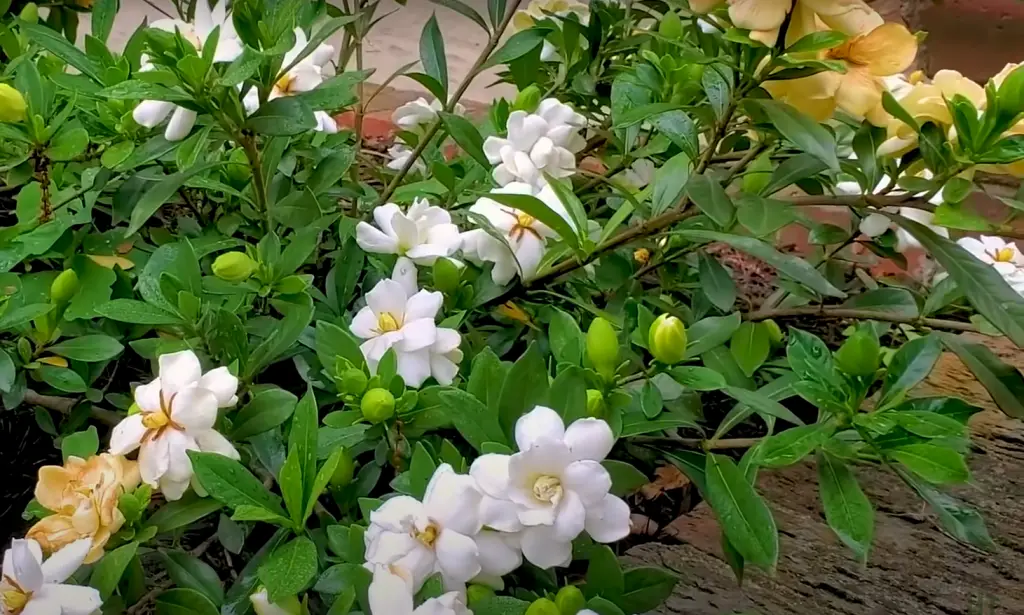
Gardenias typically have a fruity or honey-like smell that some people describe as reminiscent of white tea. The flowers also tend to be headier than other flowers like roses or lilies. Gardenia’s refreshing fragrance makes it an ideal choice for home scents and perfumes alike!
While both jasmine and gardenia are known for their beautiful aroma, they have different notes. Jasmine has a sweet, heady scent that is characterized by its top notes of citrus, floral, and green notes. Gardenias have a heavier fragrance with more complex scents such as honey, spice, and fruit.
It’s important to note that the smell of a gardenia can vary depending on where it was grown and when it was harvested. If you want to experience the best aroma possible from your gardenias, make sure they come from a reputable source!
The Difference Between Magnolia and Gardenia Smell
In order to understand what a gardenia smells like, it’s important to have an understanding of how its scent differs from that of Magnolia.
Gardenias are known for having a sweet and fruity or clove-like fragrance. The scent is often compared to jasmine due to its strong floral undertone. It has been described as a combination of the smell of citrus fruits such as oranges and lemons with hints of warm spices, including cinnamon and nutmeg.
On the other hand, magnolias are known for their light and slightly woody aroma. They can also have subtle hints of green tones, such as freshly cut grass or dewy leaves. Magnolias have a softer fragrance than gardenias, making them a great choice for those who prefer more subtle scents. [1]
How Long Will Cut Gardenias Last?
Cut gardenias will last for up to a week when placed in water and kept at room temperature. You can extend the life of cut gardenias by placing them in cooler temperatures like a refrigerator or near an air conditioner. Gardenias should be stored away from direct sunlight and strong drafts of air so their petals do not wilt prematurely.
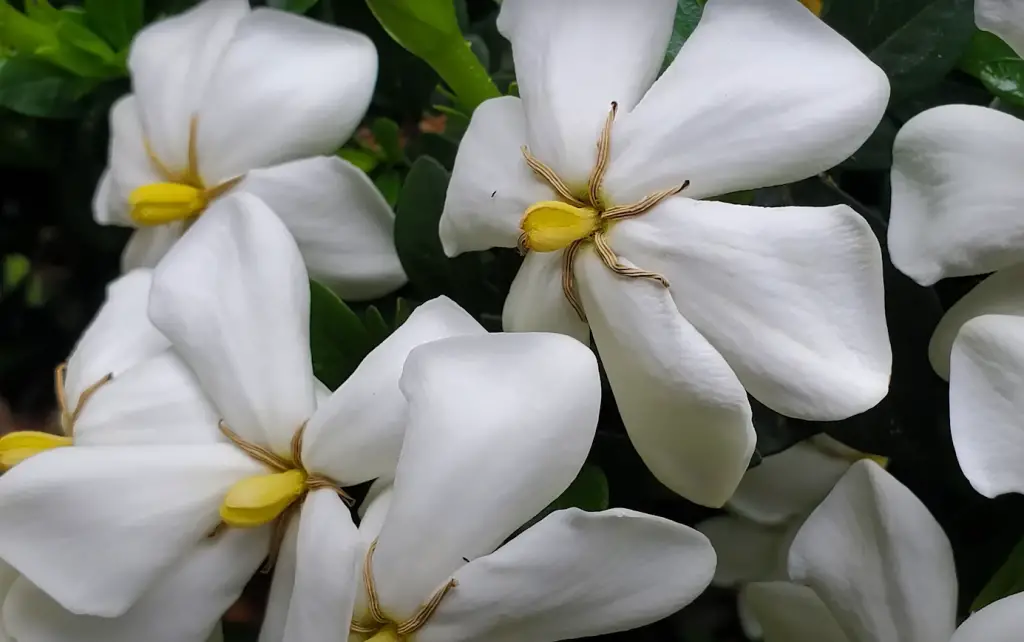
To ensure your gardenia flowers remain fresh, change the water every few days and lightly mist the leaves with water. Keep your cut gardenias out of direct sunlight, as this will cause the blooms to fade quickly. If you want your gardenias to last even longer, consider using floral food preservative which can help keep them fresh for two weeks or more! With proper care, your cut gardenias can last for a long time and provide you with a much more enjoyable fragrance.
Do Gardenias Smell at Night?
The answer to this question is yes! Gardenias are nocturnal bloomers, meaning they open up their blooms and release their scent in the evening. It’s best to enjoy the full aroma of a gardenia at night when it is most intense. During the day, you may not get as strong of a smell due to increased activity that could mask the scent.
If you’re lucky enough to have a gardenia bush in your garden or yard, take advantage of its nighttime perfume by sitting out on your porch or patio after dark. The heady fragrance will quickly fill the air around you! Even if you don’t have one close by, there are still plenty of ways to enjoy this beautiful plant’s aroma: from candles to potpourri, you can find a variety of products that are infused with the sweet scent of gardenias.
So next time you’re looking for a way to relax and unwind in the evening, consider taking a stroll or sitting out on your porch to enjoy the soothing fragrance of gardenias at night. It’s sure to be an experience you won’t soon forget!
How Long Will Cut Gardenias Last?
If you’re lucky enough to buy or receive some cut gardenias, you may be wondering how long they will last. The good news is that gardenias can last a surprisingly long time with proper care. Make sure to place them in water immediately and keep the stems submerged, changing the water every few days. Gardenias generally last around two weeks when kept this way!
It’s also important to note that gardenias should not be placed in direct sunlight, as they are sensitive to bright light and can wilt quickly. You should also avoid displaying your fresh gardenias near any sources of heat, such as fireplaces or radiators.
Gardenias also benefit greatly from flower food, which you can find at most florists or craft stores. Flower food will give the flowers more nourishment and help them last longer than they would without it.
If you’re looking for an extra-long display of gardenias, consider purchasing a potted plant instead of cut flowers. A potted plant can live up to five years if taken care of properly! You can enjoy the beauty of fresh gardenias in your home year-round with this option. So, while fresh cut gardenias may not last forever, there are plenty of ways to keep their beauty around for longer periods of time!
How To Test Soil pH for Gardenia Soil
Gardenias prefer slightly acidic soil with a pH between 5.0 and 6.5. If your gardenia’s leaves are yellowing, the soil might be too alkaline for good growth. Testing pH is an easy way to determine how much acidity (or alkalinity) is in the soil. It’s also important to do if you’re planning to transplant or repot gardenias, so that you can make sure the new spot offers similar conditions as its original environment.
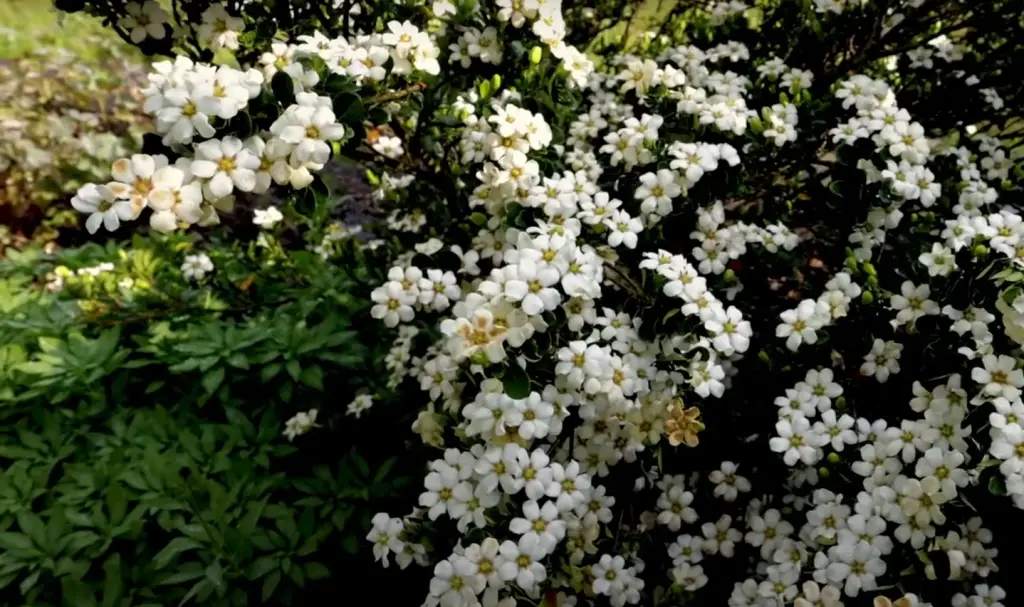
There are two common ways to test soil pH:
- Using store-bought kits;
- Performing a simple DIY test at home with vinegar and baking soda.
If you decide to use a store-bought kit, follow the instructions on the package and collect a soil sample from your gardenia’s pot or bed. DIY testing is a bit simpler.
To perform a DIY pH test you’ll need:
- Vinegar or lemon juice
- Baking soda
- A container (e.g. cup or jar)
- Soil sample from your gardenia’s pot/bed
Begin by adding 1–2 tablespoons of soil into the container. Pour ¼ cup of vinegar over the soil sample and mix it with a spoon until you’ve reached an even consistency. If there are bubbles in the mixture then the soil is alkaline (above 7.0). If there are no bubbles then it’s most likely acidic (below 7.0).
To get a more accurate reading, add 1 teaspoon of baking soda to the soil and mix it in with a spoon. If there are now bubbles, then you have an ideal soil pH for gardenias between 5.0 and 6.5.
If either test shows that your gardenia’s soil is too alkaline or acidic, you can adjust the pH level by adding lime or sulfur respectively. Garden centers usually carry these products in pellet form. Just follow the instructions on the package for the best results!
Once you’ve ensured your gardenia has optimal conditions for growth, be sure to water it regularly and keep an eye on its leaves for signs of nutrient deficiencies. With a bit of care you can enjoy the sweet smell of gardenia blooms in no time!
How is Gardenia oil cultivated?
Gardenia oil is extracted from the flower of the gardenia plant. Harvesting and extracting gardenia oil involves a painstaking process that requires patience and expertise. It begins with carefully picking the flowers at their peak of bloom, often very early in the morning. The petals are removed from the center portion of the flower where they are then steam-distilled to extract the essential oil. This process must be closely monitored and controlled to avoid any damage to the delicate compounds within it.
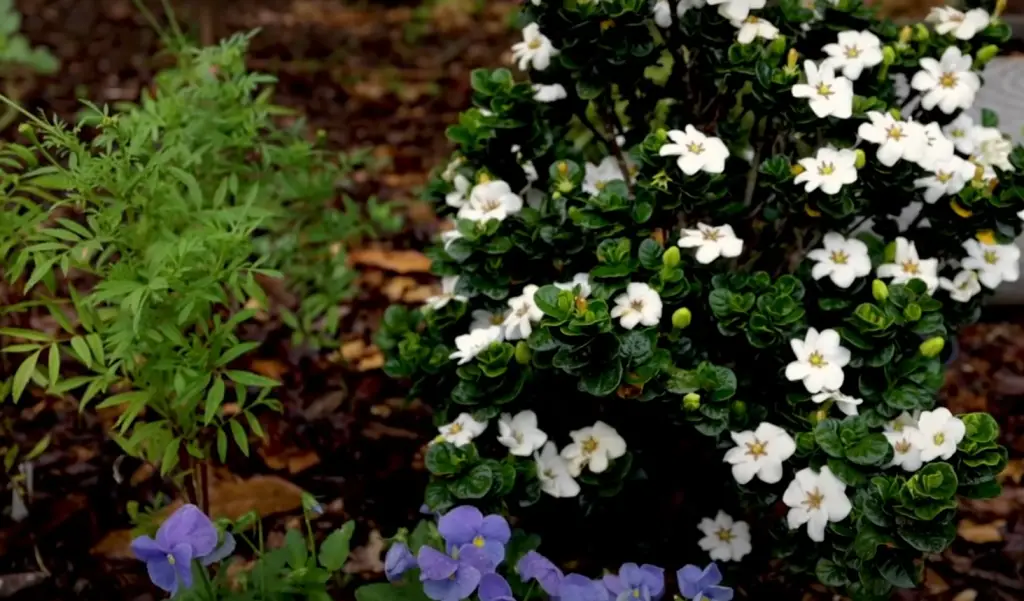
Once extracted, Gardenia oil is rich in powerful aromatics called sesquiterpenes which help promote feelings of relaxation and peace when inhaled. In addition, Gardenia oil has been traditionally used for its calming effect on emotions, as well as its ability to soothe skin irritation and inflammation. [2]
Gardenia oil is often used in aromatherapy, perfumes, cosmetics, and healing balms. It can also be inhaled or applied topically to the skin for a delightful floral aroma. Whether you’re using it for therapeutic benefits or simply enjoying its unique scent, Gardenia oil is sure to leave an impression!
Benefits Of Gardenia In Aromatherapy
Gardenia is also a popular flower for aromatherapy. The scent of the gardenia has been said to have a calming and relaxing effect, making it the perfect addition to any spa or relaxation session. Its sweet and fresh aroma can help to reduce stress levels, as well as provide an uplifting atmosphere in any space. It’s also known to be an antidepressant, helping to lift your mood when you’re feeling down. Gardenia oil is often used as part of massage therapy sessions, as its natural oils are believed to help soothe sore muscles while providing physical and mental relaxation.
When used in aromatherapy, gardenias are usually combined with other essential oils such as lavender or chamomile. Diffusing these oils can be a great way to create an atmosphere of relaxation and peacefulness. Alternatively, you can also combine gardenia essential oil with other carrier oils such as coconut or jojoba oil and use it directly on the skin for its calming properties. [3]
It’s important to note that while gardenia has many beneficial properties, it is not recommended for those who are pregnant or breastfeeding due to potential risks associated with essential oils. As always, consult your doctor first before using any type of aromatherapy product and never ingest essential oils unless under the guidance of a professional health care provider.
Gardenia as Perfumes
Apart from the natural scent of a gardenia flower, there are several products that use its fragrance to create perfumes or scented items like candles. Gardenia fragrances usually have a subtle sweetness that combines with earthy and creamy tones to give an alluring aroma. These scents are popular both in commercial perfumes and homemade fragrant oils.
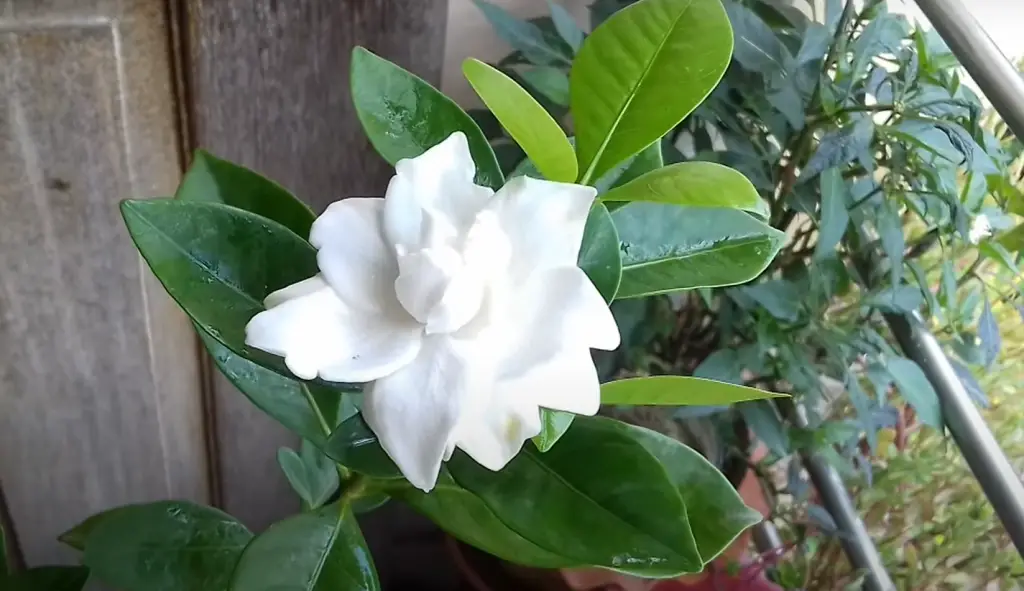
In fact, many people love diffusing these oils to add a hint of floral beauty to their spaces. You can also find bath soaps, body creams, and lotions with gardenia scents for those who prefer light fragrances over strong ones.
How To Make Gardenia Extract
Gardenia extract is a great way to get the unique smell of gardenias in your home. It’s easy to make and can be used for cosmetics, perfumes or just for a pleasant scent around the house. Here’s how:
- Start with fresh gardenia flowers that have been picked recently. If you don’t have access to fresh gardenias, you could also use dried petals from a florist instead.
- Make sure to remove any remaining stems from the petals before proceeding.
- Place your petals into boiling water and let them steep for 10 minutes, stirring occasionally so they fully absorb the liquid.
- Take the mixture off heat and strain out any remaining petals.
- Next, add the same amount of vodka as you did water. This will help preserve your extract for longer and also bring out the scent of gardenias even more.
- Let your mixture sit in a cool, dark place for 3 to 4 weeks while it infuses. Make sure to check on it every week or so to ensure that nothing has gone wrong.
- After it’s done infusing, pour your extract into an airtight bottle or jar and store away from heat and light. You can use this extract whenever you want a strong smell of gardenias in your home!
FAQ
Do gardenias smell nice?
Absolutely! Gardenias have a unique, sweet smell that is unlike any other flower. The aroma of gardenia flowers is strong and heady with a hint of citrus and jasmine. Many people compare the scent of gardenias to that of freshly cut grass or green tea. Some swear by its calming and romantic effects, while others can’t help but swoon over its strong floral notes. Whether you love it or hate it, one thing remains true: gardenia has an unmistakable smell that will linger in your senses long after you’re done smelling it. So, if you’re looking for something special to add to your home decor or perfume collection, then look no further than this incredible flower! [4]
What smells better: gardenia or jasmine?
That really depends on your personal preference! Gardenias have a strong, sweet scent that many people find pleasing. On the other hand, jasmine is often described as having an exotic, floral scent. Some people even note a hint of spice in its aroma. Ultimately, it’s up to you to decide which one smells better!
If you’re trying to make a decision between the two, why not plant both and enjoy their fragrances in tandem? Gardenias and jasmines are both relatively easy to care for and can thrive in most climates with proper maintenance. You’ll be able to experience the unique scents of each flower every day!
Be sure to keep an eye on your plants and keep them watered. A garden overflowing with vibrant blooms and a pleasant aroma is sure to make your outdoor space inviting!
Which gardenia smells good?
The beautiful and fragrant gardenia is a popular choice for perfumes, candles, and other scented products. Gardenias come in many varieties, each with its own distinct scent. Some of the most popular gardenias have strong floral notes that are sweet and delicate. Other varieties may be more spicy or citrus-like in their fragrance.
One of the best-smelling gardenias is the yellow Cape Jasmine (Gardenia augusta). This type has a pleasant sweetness with hints of orange blossom and jasmine. It also has a light musky background note that lingers after it fades away. Another highly aromatic variety is Double Form White Gardenia (Gardenia jasminoides), which has a strong, sweet smell reminiscent of honeysuckle.
For those looking for something more exotic, there’s the Blue Gardenia (Gia thunbergia) its floral and citrus-like. It also has a subtle hint of spice that adds depth to its fragrance. Lastly, the Star Gardenia (Gardenia radicans) is known for its strong scent of jasmine with hints of rosemary and orange blossom.
What does smelling gardenias mean?
The fragrant aroma of gardenias has been associated with various meanings in different cultures throughout history. In Japan, for example, the flower is seen as a symbol of purity and beauty. Additionally, gardenias have been used to represent love and admiration in many other countries like China, Korea, and India. The sweet scent of the flower has often been compared to that of jasmine or rose petals mixed with honey and musk.
Gardenia flowers are known for their unique odor which can be described as having notes of tropical fruit or even vanilla depending on the variety. This signature scent makes it popular in perfumes and home fragrance products as well. [5]
Overall, the sweet scent of a gardenia flower has been celebrated for centuries as a symbol of love, purity, beauty, and admiration throughout many cultures around the world. Its unique aroma is also highly sought after in home fragrance products due to its calming and uplifting qualities.
Useful Video: Gardenias – Super Fragrant Flowers
Conclusion
In conclusion, gardenia is an incredibly fragrant flower that can be found in all shapes and sizes. It has a powerfully sweet, citrus-like smell with hints of jasmine and rose. While its aroma is sometimes described as a heady scent or too strong for some people, it remains one of the most popular flowers for floral arrangements due to its striking beauty and unique fragrance. Knowing what a gardenia smell like can help you choose the right variety for your home or special occasion! By understanding its many facets, you will surely find the perfect gardenia flower to bring a sense of joy and luxury into your environment. Happy gardening!
References:
- https://www.gardenfine.com/what-does-gardenia-smell-like/
- https://gardenbenchtop.com/what-does-gardenia-smell-like/
- https://www.harlemcandlecompany.com/blogs/journal/featured-scent-what-does-gardenia-smell-like
- https://homesick.com/blogs/news/what-does-gardenia-smell-like
- https://www.harlemcandlecompany.com/blogs/journal/featured-scent-what-does-gardenia-smell-like










Leave a Reply
View Comments